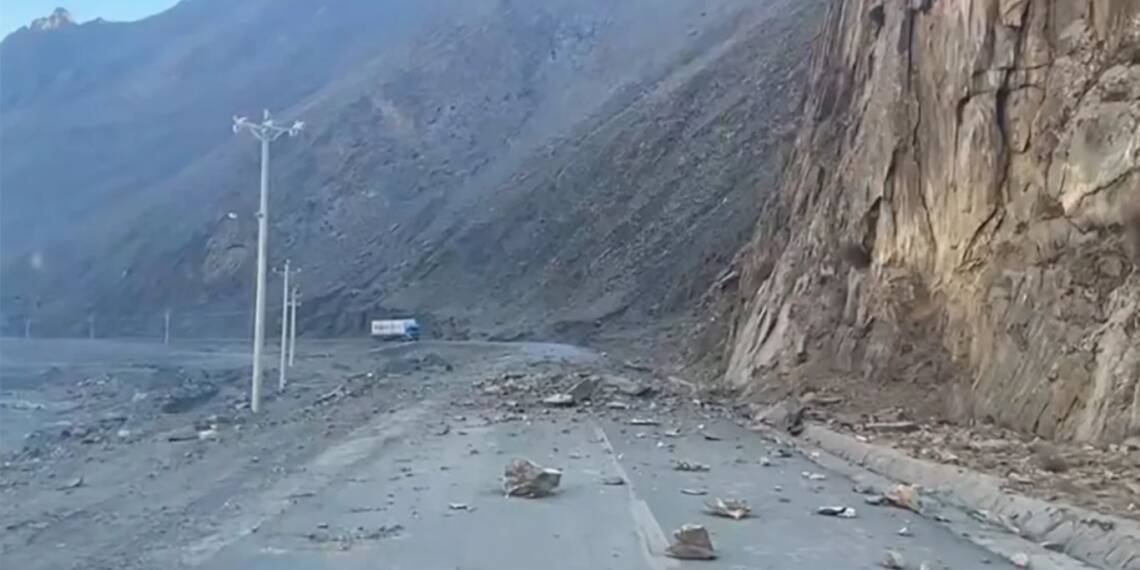At least 95 people have been confirmed dead and 130 are injured after a major earthquake struck the mountainous Tibet region on Tuesday morning. The earthquake struck in an area close to Mount Everest on January 7, 2025, causing significant destruction and loss of life.
The quake, recorded at a magnitude of 7.1 by the U.S. Geological Survey, occurred at 9:05 a.m. local time, with its epicenter located in Tingri County, approximately 80 kilometres north Mount Everest.
The region is prone to seismic events due to movement of the tectonic plates. The area lies on a major geological fault line. The region has suffered numerous quakes over the years due to collisions between the Eurasian and India tectonic pates. The Tingri tremor was caused by a rupture in what is known as the Lhasa block in an area under north-south compression and west-east stress.
The Lhasa block, or Lhasa terrane, is a key geological region in southern Tibet, bounded by the Bangong-Nujiang suture zone in the north and the Indus–Yarlung Zangbo suture zone in the south.
The earthquake hit Tibet’s holy Shigatse city around 09:00 local time (01:00 GMT) with a magnitude of 7.1 and a depth of 10 kilometres (six miles), with a series of aftershocks also occuring in the area. Tremors were also felt in neighbouring Nepal, Bhutan and northern parts of India.
The Effects of the Quake
Videos published by China’s state broadcaster CCTV showed destroyed houses and collapsed buildings, as rescue workers waded through debris and handed out thick blankets to locals. Temperatures in Tingri county, near the earthquake’s epicentre, are around -8C (17.6F), and will drop to -18 this evening, according to the China Meteorological Administration.
Both power and water in the region have been disrupted. Sitting at the foot of Mount Everest, Tingri county is a popular base for climbers preparing to ascend the world’s tallest peak.
Everest sightseeing tours in Tingri, originally scheduled for Tuesday morning, have been cancelled, a tourism staff told local media, adding that the sightseeing area has been fully closed. There were three visitors in the sightseeing area who have all been moved to an outdoor area for safety.
Residents in Kathmandu, Nepal’s capital located about 400 kilometres away from the epicenter, also reported strong tremors that prompted many to evacuate their homes. Although no immediate reports of casualties were received from Nepal, local authorities are mobilising resources to assess potential damage. Although tremors were felt in Bhutan and India, both countries have not reported an damage due to the quake.
The region, which lies near a major fault line is home to frequent seismic activity. In 2015, a 7.8 magnitude earthquake near Kathmandu, the capital of Nepal, killed nearly 9,000 people and injured over 20,000.
Response from China
In Tibet, rescue teams including the Chinese air force have joined in search efforts. Three villages had lost their phone signals by noon.
To search for survivors, immigration police officers were seen digging through rubbles with bare hands, according to social media videos posted by China’s National Immigration Administration. The footage showed a village full of collapsed houses and crumpled walls, with some residents sitting on blankets on the roadside, sipping hot water to stay warm.
A total of 49 aftershocks were recorded as of noon Monday, according to the China Earthquake Networks Center. In a statement following the quake, Chinese leader Xi Jinping called on officials to make all-out efforts to search and rescue survivors, minimize casualties, properly accommodate affected residents, and ensure their safety and warmth in the winter cold.
The Region of Tibet
Tibet is one of the most restricted and politically sensitive regions in China, and access to foreign visitors remains tightly controlled. The access to internet and media is also heavily limited and monitored by the occupying Chinese state. Beijing has maintained a tight grip on the region since the Dalai Lama fled to India in 1959 after and the region fell under the control of the Chinese forces.
The affected Tibetan city of Shigatse is a major spiritual site for Tibetan Buddhists. The entire region of Tibet has been occupied by the Chinese forces since the 1950’s, and since then the local Buddhist population has been subject to extreme oppression. The Chinese occupation forces have attempted to expunge the local culture as the local Buddhist priests have been subjected to immense tortures. The Free Tibet movement is still active as the head of Tibetan Buddhism the Dalai Lama fled from the country and remains the spiritual head of the region although in exile.
Shigatse is considered one of the holiest cities of Tibet. It is the traditional seat of the Panchen Lama, a key figure of Tibetan Buddhism whose spiritual authority is second only to the Dalai Lama. Tibetan Gedhun Choekyi Niyima who was identified as the reincarnated Panchen Lama was disappeared by China when he was six years old. The current Dalai Lama fled Tibet to India in 1959 and has since been seen as an alternative source of power for Tibetans who still contest Beijing’s control of the region.








